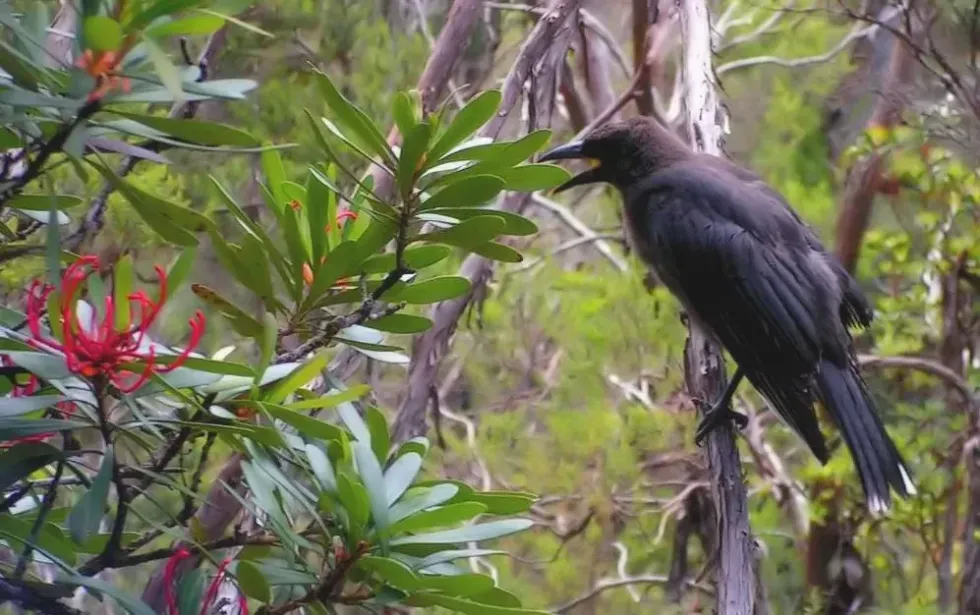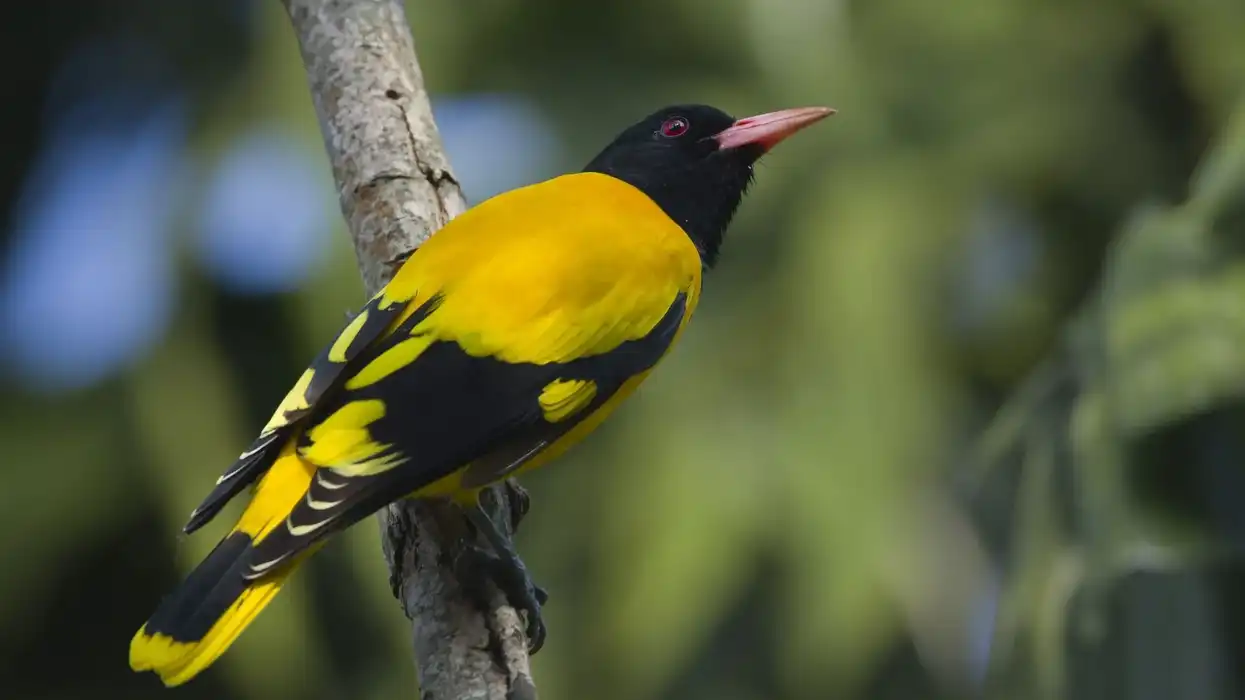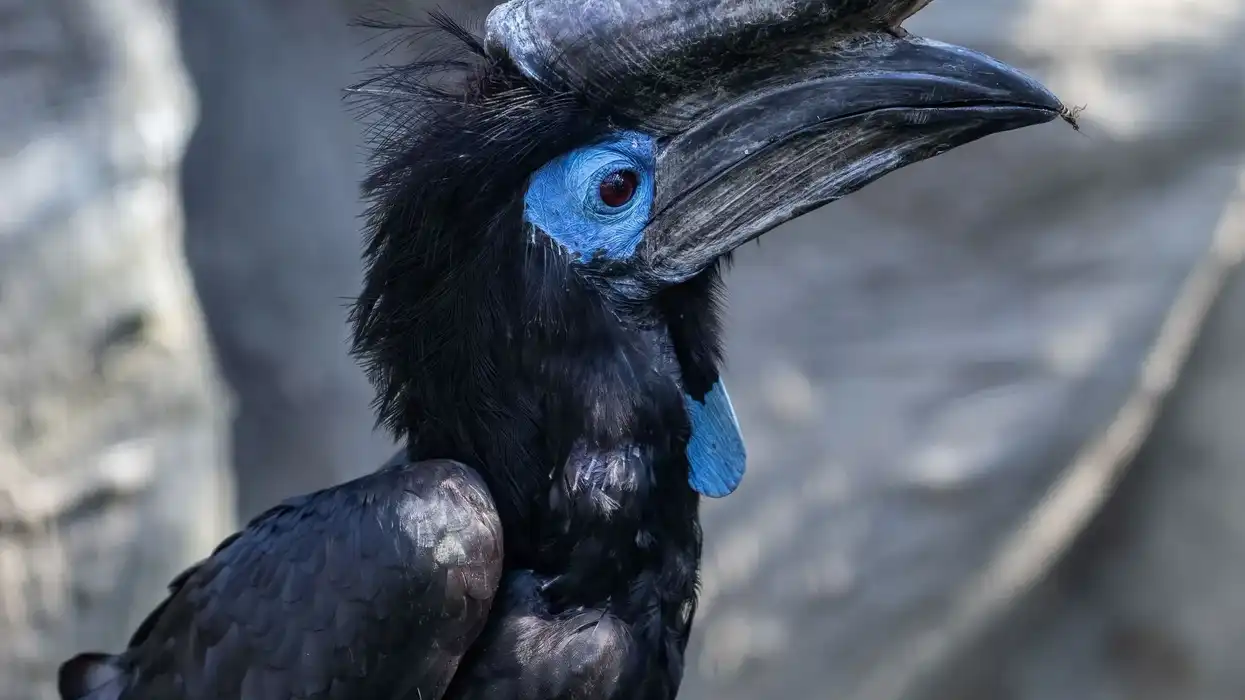The black currawong (Strepera fuliginosa), often known as the black jay in Tasmania, is a large passerine bird native to Tasmania and the nearby Bass Strait islands. It is one of three currawong species in the genus Strepera and is linked to butcherbirds and Australian magpies in the Artamidae family.
Male and female appearances are comparable with white flight feathers in the wing, black bill, and bright yellow eyes. There are three subspecies, one of which, Strepera fuliginosa colei of King Island, is on the verge of extinction.
Black currawong species may be found in a variety of Tasmania environments, including surrounding islands, grazing lands, and suburban areas. There are highly wooded regions as well as alpine heathland in the ecosystem.
Its food consists of berries, insects, and small vertebrates, and does omnivorous feeding. Black currawong breeds and roosts on trees.
This bird's breeding season lasts from August to December. You might also like to read our cockatoo and whiskered treeswift facts.
Black Currawong Interesting Facts
What type of animal is a black currawong?
The black currawong (Strepera fuliginosa) is a bird with three subspecies.
What class of animal does a black currawong belong to?
The black currawong (Strepera fuliginosa) belongs to the class Aves.
How many black currawongs are there in the world?
It is believed that there are 500 birds of this species. They have bright yellow eyes.
Where does a black currawong live?
The black currawong distribution is native to Tasmania (Mountain and lowland forests, King island, coastal heath, grazing lands, and suburban regions are all included.) and surrounding islands, where it is abundant, however, it is uncommon or missing below 660 ft (201.1 m) in elevation.
The currawong (black) breeds mostly in Tasmania's Central Highlands, with isolated reports elsewhere.
It may be found on several Bass Strait islands, notably the Hunter and Furneaux Groups. It is mainly sedentary throughout its range, however, some populations at higher altitudes may migrate to lower altitudes during the winter.
What is a black currawong's habitat?
The black currawong habitat is wetter eucalypt forests dominated by alpine ash, messmate, and mountain gum, with a beech understory. It also visits the cool rainforests of beech and king billy pine.
The currawong (black) is primarily limited to thick woods and wet gullies in the lowlands, although it may also be found in alpine scrubland and heathland at higher elevations. It is replaced by the clinking currawong in dryer, more open forest, however, the two may co-occur in areas like the Central Highlands and Eastern Tiers.
Who do black currawongs live with?
The black currawong can be found individually or in couples, although they can sometimes congregate in flocks of 20-80 birds.
Birds have been seen excavating wet mud from a sewer and putting it in their bill. Black currawongs have been spotted wrestling with each other in Maydena, Tasmania, with one bird attempting to push its opponent onto its back, while others have been observed rolling on their backs and juggling with food items such as pears with their feet.
On the beach at Sundown Point, the species has been seen in mixed-species flocks with forest ravens (Corvus tasmanicus), a similar species, silver gulls, white-faced herons, white-fronted chats, and European starlings.
How long does a black currawong live?
In the wild, the pied currawong birdlife is on average more than 20 years. A black currawong's oldest documented age is 15 years.
How do they reproduce?
The breeding season lasts from August to December for this bird.
It, like all currawongs, constructs a huge cup-nest made of sticks that are lined with softer material and put in the fork of a tree between 9.8-65.6 ft (3-20 m) tall.
A normal clutch consists of two to four eggs that are light gray-brown, purplish-buff, speckled, blotched red-brown, or purplish-brown. The chicks are born naked and blind, like in all passerines, and stay in the nest for a lengthy period of time (nidicolous).
Both parents feed the young, but the male feeds them alone once they leave the nest and grow more independent, and he also transitions from delivering food directly to them to placing it near them so they learn to eat for themselves.
What is their conservation status?
The IUCN Red List of Threatened Species classifies the black currawong as Least Concern. Strepera fuliginosa colei of King Island, one of its subspecies, has decreased throughout much of its range on King Island, perhaps owing to the destruction of its forest habitat, and has been designated as Vulnerable.
It is unknown whether competition from the more numerous woodland raven has an effect on the subspecies found there. Strepera fuliginosa colei of King Island, one of its subspecies, is on the verge of extinction.
Black Currawong Fun Facts
What do black currawongs look like?
The plumage of both sexes is black with white spots at the tips of the wings and tail feathers. The legs and eyes are all black, with brilliant yellow pupils and black bill.
In-flight, the white tips line the trailing margins of the wings, and a lighter arc around the bases of the major flight feathers is evident on the underwing. Although the plumage does not change seasonally, the black may fade to a dark brown with use.
Until they are two years old, immature birds have browner-tinged plumage and a yellow gape.
Its tail has a white tip. The forest raven (Corvus tasmanicus), a similar species, lacks the black currawong's white tail markings.
How cute are they?
They're not cute. They're similar to crows in appearance.
How do they communicate?
The black currawong sound is noisy and it is a talkative bird with a wide range of sounds.
The black currawong bird call is distinct from those of pied or grey currawong and has been characterized as a mix of alternating 'kar week week kar kar week week kar' noises, 'killok killok', or even something like a part song and half-human laughing.
Although it is frequently loud when flying in groups, it may be quiet when hunting for prey or stealing food.
To summon their children, parents also make a lengthy fluting whistle.
How big is a black currawong?
The black currawong is around 20 in (50.8 cm) on average length and has a wingspan of 31 in (78.7 cm). It is medium-sized.
Male wings are around 11 in (28 cm) in length and tails are approximately 7.5 in (19 cm), but female wings are approximately 10.2 in (25.9 cm) in length and tails are 7.3 in (18.5 cm). It is a crow-sized bird.
How fast can a black currawong fly?
The black currawong has an undulating flying pattern that corresponds to its wing beats, and it frequently cocks its tail in the air for balance before landing.
How much does a black currawong weigh?
It is a medium-sized bird. The male is somewhat bigger and heavier than the female; males of the nominate subspecies weigh 14.3 oz (405.3 g) on average, while females weigh 12 oz (340.1 g).
What are the male and female names of the species?
They're known as black currawong male and black currawong female
What would you call a baby black currawong?
The baby currawong species is simply known as juvenile currawong. The name for immature birds that are just born is nestlings.
What do they eat?
The black currawong diet is reported to be omnivorous, feeding on a broad range of items such as insects and berries, carrion, and small invertebrates. Birds feed on the ground most of the time, but they also graze in tree canopies.
In search of food, they use their bills to probe the ground or flip over clods of soil or tiny rocks. Earthworms and a variety of insects, including ants, hag moths, flies, crickets, grasshoppers, and beetles such as weevils, scarabs, and leaf beetles, are among the invertebrates ingested.
Are they poisonous?
The currawong is not hazardous to people, but their flocks are a nuisance to farmers because they continuously eat fruits and crops. They forage over orchards, seem to prefer berries, and nest in Eucalypt trees in particular. Currawong may be beneficial in tiny gardens by hunting for small insects and rodents.
Would they make a good pet?
It, on the Australian mainland, may grow extremely brave and docile, especially in public parks and gardens where people feed it, but it won't make a good pet. Currawongs are wild noisy birds that are protected by the 1974 National Parks and Wildlife Act.
They cannot be kept as pets since they are not suited to live in captivity. The IUCN Red List of Threatened Species classifies it as Least Concern.
Did you know...
Currawongs, like magpies, can imitate numerous predator sounds to a great extent. Their call is noisy.
What is the difference between a crow and a currawong?
Despite their similarity to crows and ravens, they are very distantly related to the Corvidae, belonging instead to Afro-Asian radiation of birds of the superfamily Malaconotoidea. Currawongs, unlike crows, does not have completely black feathers.
The black currawong, too, has white tips on its tail and wings that help it to be identified in flight. Currawong eyes are brilliant yellow, whereas crows have brown eyes.
What do currawong calls mean?
Long ago, it was claimed that the currawong's cry was the voice of the area's Australian ancestors returning as ghosts. It was also thought that currawong music mystifies and hypnotizes the senses, lulling the ears into bliss and calm. While there is no proven evidence of either of these meanings, they make an interesting story!
Here at Kidadl, we have carefully created lots of interesting family-friendly animal facts for everyone to discover! For more relatable content, check out these flycatcher facts and vesper sparrow facts for kids.
You can even occupy yourself at home by coloring in one of our free printable black currawong coloring pages.










